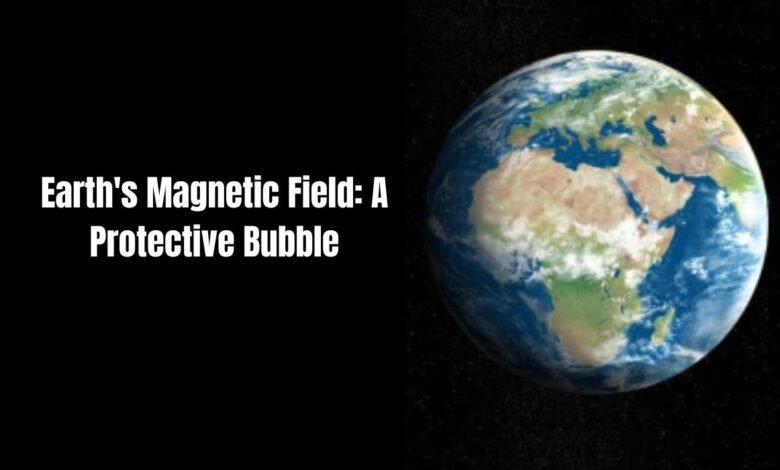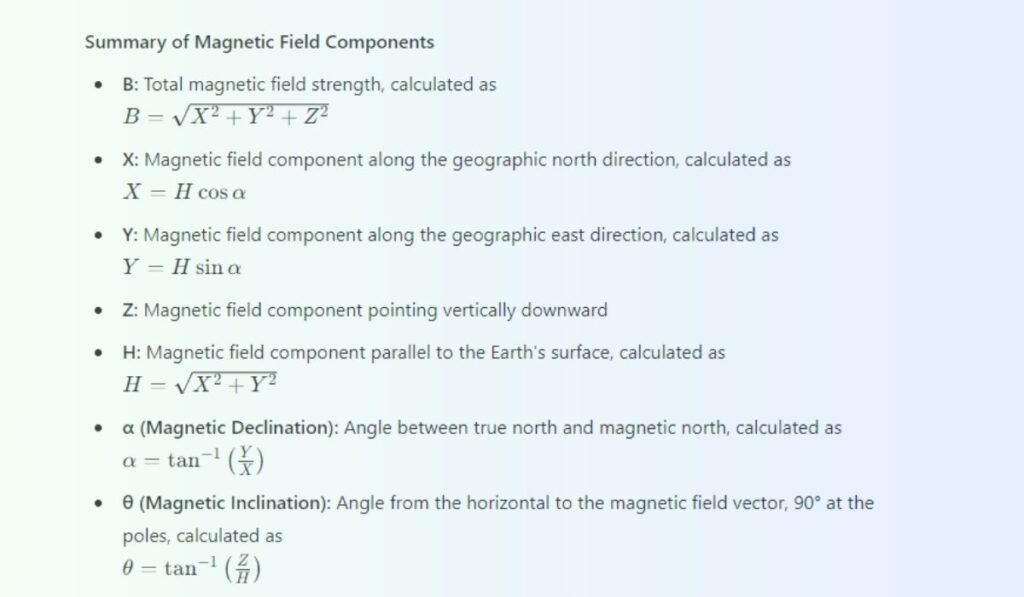Magnetic Field of Earth – Earth’s Magnetism
Discover magnetic field of Earth, its role in protecting us and science behind Earth's magnetism.

Magnetosphere, layer of protection, is created by Magnetic Field of Earth also known as geomagnetic field, which originates deep within globe and extends into space. Because it protects us against solar wind—a charged particle that comes from sun—this field is essential to life. Life as we know it would not be possible without this protection. You only need to look at Mars, where the hostile environment is a sharp contrast to Earth, to learn what occurs when a planet loses its magnetic field.
There are two types of poles on Earth:
Geographic Poles: Where lines of longitude meet are North and South Poles. Geographic South Pole is in Antarctica; Geographic North Pole is in Arctic Ocean.
Magnetic Poles: These are where Earth’s magnetic field lines enter and exit the planet. Currently, in Northern Canada, the Magnetic North Pole is close to Ellesmere Island. This Magnetic North Pole, which is located approximately 310 miles (500 kilometers) distant, is what a magnetic compass points towards, not the Geographic North Pole.
It’s interesting to note that there is actually a south magnetic pole, not the north as we know it. North and south poles of Earth’s magnetic field are attracted to one another. Thus, a compass actually points in the direction of the south magnetic pole while it points north.
Magnetic poles are not stationary like the geographic poles are. Magnetic North Pole was found by James Clark Ross in 1831 and it travels northwest at a speed of roughly 25 miles (40 km) per year. Earth’s magnetic poles shift roughly every 200,000 years, though the previous flip occurred 790,000 years ago
What Causes Magnetic Field of Earth?
Geodynamo is process that generates magnetic field of Earth. Planet needs a few essential elements in order to produce a magnetic field like this:
- Fast rotation
- A fluid interior
- A liquid that can conduct electricity
- An internal energy source driving fluid’s motion
Molten iron travels slowly in outer core, deep within Earth. Energy is produced by this movement & subsequently transformed into electrical and magnetic energy. U.S. Geological Survey claims that this process establishes a positive feedback loop in which electric currents are generated by magnetic field and subsequently furthered by currents themselves and further magnetic fields. Our magnetic field remains strong & active because of this continuous process.
How Does Magnetic Field Protect Earth?
Magnetosphere or magnetic “bubble,” around us protects us from space weather hazards like solar wind. Without this shield, solar wind may dissolve our atmosphere & deprive us of oxygen we require to survive.
According to NASA, magnetosphere also shields humans from cosmic rays and particles ejected during phenomena such as coronal mass ejections (CMEs) that originate in deep space. It traps dangerous energy in areas known as Van Allen radiation belts, deflecting it away from Earth. When sun is particularly active, these belts might develop larger.
Magnetosphere isn’t flawless, though. It can be disturbed by strong space weather, such as powerful solar winds or large CMEs. This may result in geomagnetic storms, which might endanger astronauts and spacecraft and cause issues like radio and power outages.
For instance: Carrington Event of 1859 led to the failure of telegraphs. NASA claims that a CME in 1989 brought about a 12-hour blackout in Quebec, Canada.
How much a CME affects Earth depends on its magnetic field. If the CME’s field aligns with Earth’s field, it might pass by with little effect. But if it’s aligned in the opposite direction, it can disrupt Earth’s magnetic field and cause strong geomagnetic storms.
Positively, Earth’s poles witness stunning auroras due to disruptions in magnetosphere. These breathtaking displays of light, known as the northern lights (aurora borealis) and the southern lights (aurora australis), are produced when charged particles smash with the gases in our atmosphere.
Magnetic Pole Reversal
Earth’s magnetic poles have moved hundreds of times over the previous 200 million years, according to Science Daily. Accordingly, the north pole turns into the south pole and the south pole into the north pole.
According to NASA, these flips typically occur every 200,000–300,000 years. However, another rotation is long overdue—more than 790,000 years have passed since the last one. But don’t worry, it takes time to happen. The full pole-switching process may take hundreds or even thousands of years.
Components of Earth’s Magnetic Field
Earth’s magnetic field has three main components that determine its strength and direction:
Magnetic Declination
This is the angle between true north (geographic north) and magnetic north. True north changes depending on where you are on Earth and the time.

Magnetic Inclination (Angle of Dip)
This is the angle between the horizontal plane and the magnetic field. At the magnetic equator, the inclination is 0°, and at the magnetic poles, it’s 90°.

Horizontal Component of the Earth’s Magnetic Field
The magnetic field has two main components:
- Horizontal Component (H): This is the part of the magnetic field that lies parallel to the Earth’s surface, pointing toward the magnetic south pole.

- Vertical Component (V): This is the part of the magnetic field that points vertically downward.

Magnetic Fields on Other Planets
Not every planet has a magnetic field as Earth does. Earth’s magnetic field is far weaker than that of Jupiter, Saturn, Uranus and Neptune. Still, scientists aren’t entirely sure how these fields are formed.
Magnetic fields of planets vary. For instance, the liquid interior and internal heat of Mars prevent the planet from producing a magnetic field. Although Venus has a liquid core, the planet doesn’t spin quickly enough to generate a magnetic field.
- Casimir Effect
- A new element on the periodic table might be within reach
- What are Rare Earth Magnets?
Frequently Asked Questions (FAQs): Earth’s magnetic fields
Q1: Does the Earth’s magnetic field vary at different locations?
Yes, depending on your location, magnetic field varies. Location & time both affect it. Satellites & over 200 magnetic observatories worldwide are used by scientists to track these changes.
Q2: Has the Earth’s magnetic field changed in recent years?
Yes, Earth’s magnetic field is constantly changing. At that moment, magnetic field imprints itself on cooling rocks as tectonic plates form along ocean ridges. Scientists have been able to reconstruct Earth’s magnetic field’s evolution over past 160 million years by examining these rocks.
Q3: What is a geomagnetic reversal?
Earth’s magnetic north and south poles switching positions is known as a geomagnetic reversal. This indicates a direction change in magnetic field. Chronological intervals are intervals between these erratic flips.
Q4: What happens to the Earth’s magnetic field and the angle of dip where a magnetic needle can rotate freely in a vertical plane?
Horizontal component of the Earth’s magnetic field is zero, and the angle of dip is 90 degrees.
Q5: What causes Earth’s magnetism?
Earth’s magnetism comes from the movement of charged particles in its molten core. These movements create electric currents, which generate the magnetic field.



